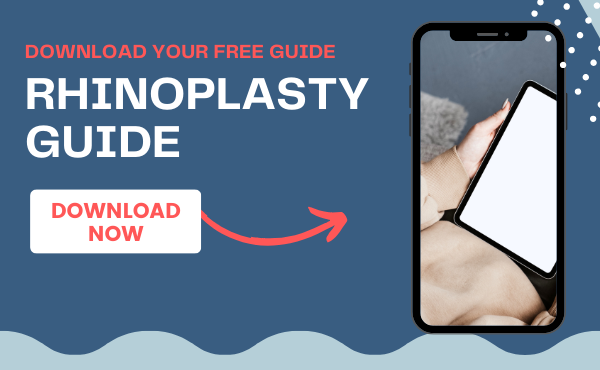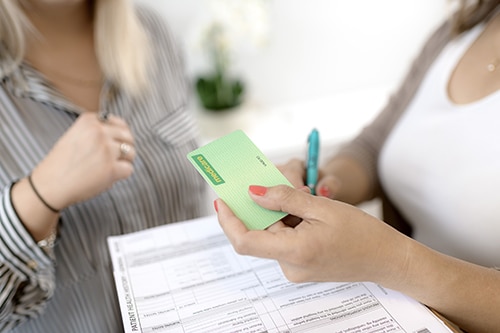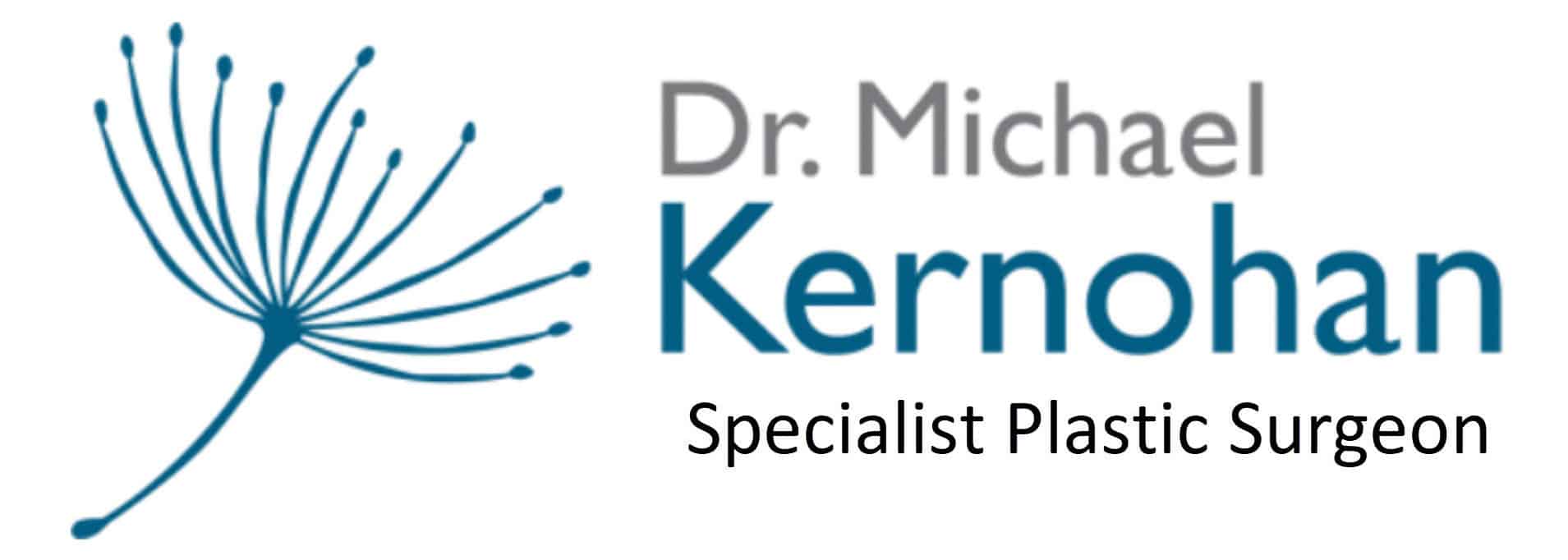Rhinoplasty Surgery – Nose Reshaping in Sydney by Dr Kernohan
Patients seeking rhinoplasty often have a combination of cosmetic concerns and functional problems like a blocked nose. Rhinoplasty surgery can be very helpful for both of these problems.
Dr Michael Kernohan is a specialist plastic surgeon in Sydney. Find out more about rhinoplasty surgery and what to expect before and after the surgery. Learn what the treatment involves, including the recovery time, what benefits it brings and what risks there are.
PLEASE NOTE – Dr Kernohan does NOT perform Secondary Rhinoplasty or Revision Rhinoplasty Surgery on other Surgeon’s patients.
Download Dr Michael Kernohan Rhinoplasty Guide

What is a Rhinoplasty?
Rhinoplasty is surgery to change the shape of your nose by modifying the bone or cartilage. A Rhinoplasty or a nose job is one of the most popular types of plastic surgery.
Dr Michael Kernohan is a specialist plastic surgeon in Sydney’s Southwest. He is a caring and empathetic surgeon who performs Rhinoplasty & facial surgery, reconstructive and cosmetic surgery procedures.
Why consider Rhinoplasty surgery?
The nose is a very prominent part of the face. Typical features that are amenable to treatment include:
- appearance concerns following trauma including breathing difficulties
- a hump on the nose in the side profile
- problems with the tip – boxy, drooping etc
Benefits of Rhinoplasty Surgery
People have different reasons for getting the procedure done; a broken nose after an accident, to correct breathing issues, to fix a birth defect, or others.
There are many benefits of getting the nose you want. Some of the benefits include:
Better Sleep
Restricted airflow is a problem in its own right. If you snore a little too often while sleeping, you might be dealing with constricted airflow.
Helps with Sinus Pressure
Nearly all of us are familiar with the plugged up, claustrophobic feeling of blocked sinuses. Rhinoplasty can help with the issues associated with a deviated septum that allows your sinuses to drain easily.
Customised Results
Rhinoplasty is a highly customisable procedure. No one nose fits all and the surgeon will help you choose the right nose shape for yourself.
Permanent Results
The results of rhinoplasty are permanent and will last a lifetime. You don’t need to worry about constant upkeep like some of the other cosmetic procedures.
Preparing for Rhinoplasty Surgery
Most patients are assessed by the anaesthetic team. This assessment may include:
- Assessing your general health and fitness before surgery by carrying out various tests and investigations. These may include blood tests and if indicated an ECG (electrocardiogram – heart tracing) and chest x-ray. Photographs will provide a record for your notes to allow a comparison of your nose before and after surgery
- Discussing your current medication, any allergies you may have and information on your planned treatment and hospital services
It is important that you are completely satisfied that you have been given all the information you need and that you fully understand the risks and benefits of your surgery before you sign your consent form.
About the Rhinoplasty Procedure
The rhinoplasty procedure usually takes two to three hours to complete and is most commonly undertaken under a general anaesthetic.
Techniques for rhinoplasty vary, but the most common procedure involves an incision across the columella between the nostrils for open nose surgery. In addition small 2-3mm incisions are made through the skin at the side of the nose to facilitate adjustment of the bones underneath.
The skin is dissected off the cartilages and bones that support the nose and the cartilages are separated. The septum of the nose is often adjusted and straightened as much as possible. The bones are reduced and cartilages adjusted to attempt to control the shape of the nose as it heals.
Reasons for having a Rhinoplasty
Rhinoplasty can help you with:
- Getting rid of the hump on the nose
- Straightening the nose bridge
- Reshaping the tip of the nose
- Increasing/decreasing the size of nostrils
- Opening up the breathing passages
- Making the nose smaller
Nose jobs can be performed for both aesthetic and medical reasons based on the requirement of each individual. Some might get a nose job to fix their aesthetic issues while others might need one to fix their breathing problems. When performed by the right surgeon, the procedure is safe, effective and produces permanent results.
Rhinoplasty Procedure
A rhinoplasty procedure can either be done in a hospital setting or a surgical facility. The surgery will be performed under local or general anesthesia. If your nose surgery is relatively simple, it could be done under local anesthesia which will numb your entire face. You might be given medication via an IV that can make you groggy.
If general anesthesia is used, you will be completely unconscious throughout the procedure. Once you are numb or unconscious, the surgeon will make cuts between/inside your nose. Then, they separate your skin from bone or cartilage and then start reshaping your nose based on your unique needs.
If your nose requires additional cartilage, Dr Kernohan will remove the cartilage from the ear or the nose. The procedure can take anywhere from one to three hours based on the complexity.
Recovery after Rhinoplasty
Most patients will be awake within half an hour of the operation finishing. Pain is controlled with medication. A splint is often taped to the nose with some soft silicone splints inside the nostrils. It is likely you will be ready to go home the same day or the next day.
Expect to have a quiet time at home for the first week with no heavy lifting or strenuous work. It is likely you will need two weeks off work, and during the first two weeks you will need help with shopping, housework and care of small children and pets. You will not be able to drive for at least the first week and then only for short journeys.
After the rhinoplasty is completed, Dr Kernohan will place a splint on your nose. It will help your nose retain the shape that will allow it to heal. In some cases, the surgeon will place a nasal pack or splint inside your nose in order to stabilise the septum (the part of the nose between your nostrils).
You will be thoroughly monitored in a recovery room for a couple of hours post-surgery. If everything is fine, you’ll be asked to go home. In certain cases, the doctor might ask you to stay in a hospital for a couple of days. You won’t be able to drive yourself home. So make sure you arrange for someone in advance.
In order to minimise swelling and bleeding, you’ll be asked to keep your head elevated while resting. You might feel congested as your nose will be quite swollen and packed with cotton. Most people will be asked to leave splints/dressings in place for at least a week post the procedure. In the case of absorbable stitches, they’ll dissolve on their own. If the stitches are absorbable, you’ll be required to see your doctor again in a matter of one week.
It is best to have some help with your during the first-week post-surgery. You can ask a family or a friend to stay with you for the first few days. Memory lapses, slow reaction and impaired judgement are some of the most common side effects of the surgery.
You will need to see your surgical team approximately 7 days after surgery. Once all the wounds are healed it is likely the surgeon will want to see you at about three to six months after your surgery.
You will experience drainage and bleeding post-surgery. Hence, Dr Kernohan will tape a drip pad to your nose that will collect the blood and mucus. Dr Kernohan will give you clear instructions on how often you need to change your drip pad.
Your face will also be quite puffy and you are bound to experience headaches. You will also have discolouration around your nose for quite some time. Make sure to avoid the following activities post-surgery:
- Running and jogging
- Strenuous physical activities
- Swimming
- Blowing your nose
- Chewing excessively
- Making facial expressions
- Pulling clothes over your head
- Wearing eyeglasses
- Vigorous teeth brush
- Excessive sun exposure
During the recovery process, apply a cold compress and ice packs to minimise discolouration and swelling. Follow-up care is very important post-surgery. Make sure to go for follow-up appointments and stick to the instructions of your surgeon.
Longer Term Recovery
Light recreational activities such as walking and light exercise can usually be started after two to three weeks, gradually building up to more strenuous workouts after four to six weeks.
You can go back to office or desk work within a week’s time frame. The procedure can also impact the area around your eyes. Expect to have some numbness, discolouration, and slight swelling. These effects will fade away in a couple of weeks. Some minor swelling can linger around for at least six months.
You should be able to return to active work after two to three weeks depending upon how strenuous your work is.
Rhinoplasty is a big operation and when returning to work it is very common to feel tired. This can continue for up to three months.
The initial swelling and bruising of the nose and cheeks after the operation usually fades within about three months.
The shape of the nose continues to change over the first year as the healing process progresses.
What can I expect after the procedure?
Bleeding or increasing pain, redness, or fever. If in doubt – ask your surgeon or local hospital if you are concerned.
When should I return to the hospital for a follow-up appointment?
When you are discharged from hospital you will be given an appointment to be seen by the surgeon or nurse.
Avoiding The Risks of Rhinoplasty
All surgery has risks and are considered in two categories – generalised risks common to most procedures and specific additional risks for a rhinoplasty. Dr Kernohan will cover your risks during the consultation and in your informed consent document. Read Dr Kernohan’s risks of surgery page for more information.
Rhinoplasty Price & Costs – How much is a Rhinoplasty in Sydney?
Each patient is different and you will get a customised quote after a consultation with Dr Kernohan. For an estimate of the price of rhinoplasty surgery please contact the clinic. Also, check out the prices and fees page.
How much is a nose job in Australia?
Typically in Australia, a nose job will cost between $8,000 and $25,000 AUD. It is best to get a quote from your surgeon, discuss your financing options and then start saving.

Funding Your Rhinoplasty
How do I get a nose job with Medicare?
- Medicare will only cover the expenses of a nose job if it is deemed medically necessary by your surgeon.
ls rhinoplasty covered by Medicare?
- Medicare will only cover Rhinoplasty when it is deemed as a medical necessity. The procedure will not be covered by Medicare if you are getting it done for purely aesthetic or cosmetic reasons. You must meet the strict medicare criteria.
How to find the Right Rhinoplasty Surgeon in Sydney
Make a list of experienced, highly qualified specialist plastic surgeons or ENT nose surgeons.
Always ask other medical professionals you trust and look at before & after photos of past patients.

Rhinoplasty FAQs
Here is a list of frequently asked questions regarding Rhinoplasty:
What qualifies me for a nose job?
You are a good candidate for Rhinoplasty if:
- Your facial growth is complete
- You are in a physically healthy state with no chronic illnesses
- You have realistic expectations from the treatment
- You do not smoke or can quit it for a specified duration
What are the risks of a nose job?
- Some of the potential risks of the nose job include anaesthesia risks, change in skin sensation (numbness or pain), difficulty breathing, infection, nasal septal perforation, poor wound healing or scarring, the possibility of revisional surgery, skin discolouration and swelling.
How long is recovery from a nose job?
- It will roughly take you six to eight weeks to recover from a nose job. The swelling will last for much longer.
At what age can I get a nose job?
- Usually over 18, provided that your nose is completely developed; it typically develops at 13 or 14 in girls and 15 or 16 in boys. There are strict conditions for any teenage patients.
Do all plastic surgeons do rhinoplasty?
- Most plastic surgeons do rhinoplasty. However, it is not a great idea to go to just any surgeon. It is best to choose the one that is experienced in rhinoplasty procedures.
How can I make my nose smaller without surgery?
- You cannot make your nose smaller without surgery. You can make it appear smaller with a non-surgical nose job.
Can I get my nose made smaller?
- Yes, you can make your nose smaller with rhinoplasty.
At what age can you get a nose job in Australia?
- You can get a nose job in Australia at any age over 18, considering that your nose is fully developed.
Why is rhinoplasty so expensive?
- Firstly, it is a highly delicate procedure that involves the expertise of the plastic surgeon. Moreover, you are not only paying the fees of the surgeon. You are also paying for the services of other specialists/consumables, anesthesiologist, nurses, facility, medications, and post-op care.
Are nose jobs painful?
- A nose job is performed under anesthesia, so you don’t feel a thing during the procedure. Post the surgery, you might feel a bit of discomfort but it won’t be painful.
Are there alternatives to nose surgery?
- All surgery involves some risk. Filler injections or a Liquid Nose Job are occasionally useful for masking a cosmetic nasal feature but their use is temporary and have significant risks.
Your Rhinoplasty consultation with Dr Kernohan
Ensure your consultation is with an accredited plastic surgeon who is registered with AHPRA as a specialist in plastic surgery.
Expect your surgeon to ask you about your general health, what symptoms you suffer from and what concerns you have about your nose. Your surgeon will examine your nose internally and externally.
If, after careful assessment, you are suitable for rhinoplasty surgery expect to discuss the type of surgery, principles of the operation, likely outcomes and potential risks of surgery.
You must have more than one consultation. It is very difficult to take on board all the information at just one consultation, and it is important that you have time to think about the information you have heard and a chance to ask any questions.
Key points to discuss at your consultation include:
- Your expectations and the expected outcomes of surgery
- The benefits to you of the surgery
- Any risks, complications or limitations





